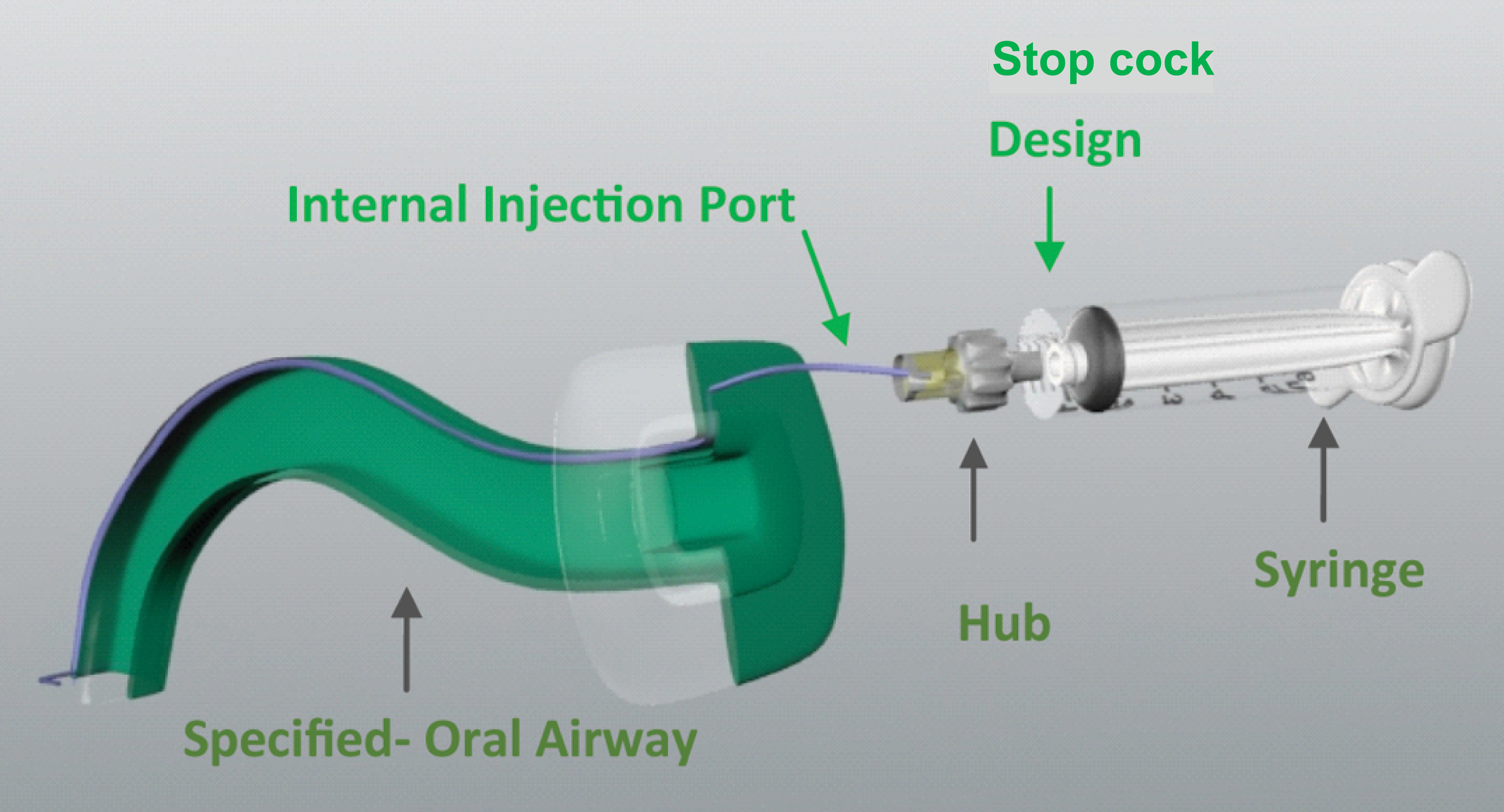An Experience: An Oropharyngeal Airway with an Unique Feature
Hojjat Pourfathi1, Haleh Farzin2
1 Department of Anesthesia, Tabriz University of Medical Sciences, Tabriz, East Azerbijan, Iran.
2 Department of Anesthesia, Tabriz University of Medical Sciences, Tabriz, East Azerbijan, Iran.
NAME, ADDRESS, E-MAIL ID OF THE CORRESPONDING AUTHOR: Dr. Hojjat Pourfathi, Nikokari Hospital, Tabriz, East Azerbijan, Iran.
E-mail: hojjatpourfathi@gmail.com
Dear Editor,
Modern surgery practice necessitates safe and efficient anaesthesia requiring securing airway at the start of anaesthetic plan [1]. The primary goal of anaesthesiologist is providing oxygenation and ventilation [2]. Early evaluation of difficult airway is a critical step to re-establish ventilation and oxygenation.
When one assesses difficulty with intubation or ventilation, one of the main approaches is associated with awake intubation [3]. Awake intubation is an essential part of anaesthesia in any patient with difficult airway, but it is associated with some complications such as gag, coughing or laryngospasm. In other words, good topical anaesthesia for airway instrumentation is needed [4]. Severe mortalities due to difficult intubation are common [5].
There are various plans for awake intubation; best of them is awake fiber optic intubation. These methods need topical anaesthesia for providing anaesthetist and patient’s comfort, cooperation, maintenance of airway by spontaneously breathing [6]. Topical local anaesthesia application by nebulizing technique is one method to anaesthetize airway [7]. Topicalization is a simple method to spread LA to upper airway [8]. In spite of any advances, topicalization of airway is problematic and time-consuming [9], due to lack of a suitable device. In our institute, we had to face certain problems concerning difficult airway and awake intubation. Topicalization is one of our concerns due to prevention of any adverse reactions including gag or laryngospasm during awake intubation.
Thus, we prepared an airway with internal injection port (i.e., soft plastic) that allows spray of Local Anaesthetic (LA) into the upper airway. Its internal diameter is 2 mm ending with a stop cock design for injection to the right, left and inferior sides of glottis. In the outer portion, we designed a hub for syringe attachment, providing easy and rapid topicalization [Table/Fig-1].
Oropharyngeal airway with internal injection port in airway main body.

We had good experience in terms of patient and operator satisfaction, while using the device in our institute. Till now, we had used it in more than eight patients with difficult airway, during the last two years.
As we need devices with less or minimal invasive methods in our practice, which are both safe and cost-effective, this device could be an ideal therapeutic approach in patients with difficult airway, particularly for inexperienced anaesthesiologists.
This invention is registered with the number 139450140003014069 in the Intellectual Property Center of the Islamic Republic of Iran.
[1]. Osborn IP, Kleinberger AJ, Gurudutt VV, Airway management, emergencies and the difficult airway Anaesthesiology and otolaryngology 2013 Springer:115-32. [Google Scholar]
[2]. Aziz M, Principles of airway management the anaesthesia technician and technologist’s manual All you need to know for study and reference 2012 :155 [Google Scholar]
[3]. Benumof JL, Management of the difficult adult airway. With special emphasis on awake tracheal intubation Anaesthesiology 1991 75(6):1087-110. [Google Scholar]
[4]. Xue FS, Liu HP, He N, Xu YC, Yang QY, Liao X, Spray-as-you-go airway topical anaesthesia in patients with a difficult airway: a randomized, double-blind comparison of 2% and 4% lidocaine Anaesthesia & Analgesia 2009 108(2):536-43. [Google Scholar]
[5]. Leslie D, Stacey M, Awake intubation Continuing Education in Anaesthesia Critical Care & Pain 2014 :mku015 [Google Scholar]
[6]. Simmons ST, Schleich AR, Airway regional anaesthesia for awake fiberoptic intubation Regional Anaesthesia and Pain Medicine 2002 27(2):180-92. [Google Scholar]
[7]. Gupta B, Kohli S, Farooque K, Jalwal G, Gupta D, Sinha S, Topical airway anaesthesia for awake fiberoptic intubation: Comparison between airway nerve blocks and nebulized lignocaine by ultrasonic nebulizer Saudi Journal of Anaesthesia 2014 8(Suppl 1):S15 [Google Scholar]
[8]. Pani N, Rath SK, Regional & topical anaesthesia of upper airways Indian Journal of Anaesthesia 2009 53(6):641 [Google Scholar]
[9]. Tsui BC, Dillane D, Yee M-S, Patient-controlled oral airway insertion to facilitate awake fibreoptic intubation Canadian Journal of Anaesthesia 2008 55(3):194-95. [Google Scholar]